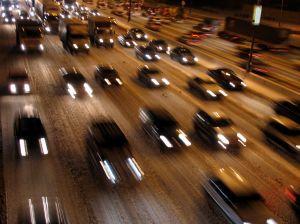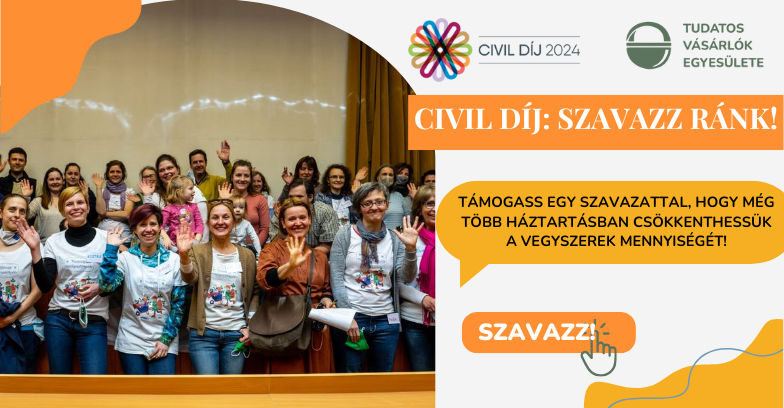
| Lewis Akenji
Auto-centricity and the Tyranny of Image – Part I
Some 1.7 million people live in Budapest; comparable to the 1.2 million
cars that use its roads everyday. Every year this increases by 30,000
cars, faster than the population growth itself – it increased by 8000
in 2005. At this rate, soon enough there’ll be more cars running around
in Budapest than residents.
This winter I rented a standard sedan car
to collect some black-and-white photography home-laboratory equipment from a
generous acquaintance. We met at Csúcshegy in the 3rd district, just out of the
city. As I drove back to the city the traffic increasingly grew heavier and my
speed gradually deteriorated until the brackets of 0 and 15 km/h. In fact, we
were so slow and stopped so often I wrote parts of this article while waiting
on the road.
In the driving mirror I could see parts of
my new acquisition strutting out of the box in the trunk and I let my mind
linger to thoughts of how I’ll set up my lab at home and develop photos that
capture the magic of Budapest. Not everyone was smiling in that traffic jam,
and mine was short-lived. As I looked around the endless lines of cars, I
noticed something: most of us were sitting with long faces, alone, in big cars
that each had the capacity for some five persons, driving at speeds less that
10% of what the car commercials say, wishing we were somewhere else, and yet
looking at each other and silently comparing cars. “Where’re we going?” I
uttered half-loud to myself.
In February 2003 the city of London adopted
a new measure to curtail heavy traffic. With few exceptions, cars driving into
the Central London Area during the day on weekdays must pay a fee, known as the
congestion charge. Despite complaints, particularly from commuters from the
greater London area and others who feel their sense of freedom with their cars
is being restricted, the benefits are immediately apparent, according to a
report published by Transport for London after the first six months of the charge.
In the first month, traffic levels dropped
by 25% of pre-charge levels and journey times of cars decreased by as much as
50%. Car-sharing and alternative transportation schemes have developed, and
unnecessary journeys are being avoided. Apart from organisations like the
Association of British Drivers, most early detractors of the charge have conceded
that the traffic situation in London has improved considerably. To absorb the
population that is cutting down on car use, public transit has been boosted,
increasing the number of buses and making trips more regular to allow for
better planning.
Some 1.7 million people live in Budapest;
comparable to the 1.2 million cars that use its roads everyday. Every year this
increases by 30,000 cars, faster than the population growth itself – it increased
by 8000 in 2005. At this rate, soon enough there’ll be more cars running around
in Budapest than residents. Cars need more than one house (garage at home,
parking spot at the office, holiday/coffee/restaurant parking lots, etc) and vast
infrastructure (roads, gas stations, service spots, and disposal facilities).
Under a business-as-usual scenario, we will soon need more space and facilities
for our cars than we do for people, if that’s not the case already. Of course,
animals, trees, and other elements of nature are already out of the equation.
It’s only us, our concrete buildings, our asphalt, our cars and our ever-rising
fuel costs.
The yearly cost of traffic jams in the EU
is €50 billion – about 0.5% of the GDP and estimated to go up to 1% by 2010.
More than half of the fuel we consume while driving is due to traffic jams and
inefficient use of cars. There is the heated issue of climate change, resulting
from emissions of greenhouse gases, the main one being carbon dioxide
(estimated to cause 66 – 74% of global warming) which is produced mainly from
burning fossil fuel, as during car use. In fact, two major areas in which we
can individually have a positive effect on climate change are household energy
use and personal transportation choices (representing close to half of all CO2
emissions in Hungary). This article however focuses more on effects on
sustainable lifestyle.
When a car breathes out, the exhaust fumes
contain the following pathogens: carbon monoxide, nitrogen dioxide, nitrogen
monoxide, sulphur dioxide, particulates, benzene, formaldehyde, polycyclic
hydrocarbons. The Environmental Working Group, EWG, in the US brings together a
team of respected scientists, engineers, policy experts, and lawyers to study the
effects of actions and policies on the health of people and the environment, and
to propose solutions. Looking at growth in car use, the EWG has developed an
Auto Asthma Index, which determines how and which vehicles are most or least
likely to contribute to “the asthma epidemic. It’s a tool meant to help us
think about smog not as an environmental problem but as a health crisis that
directly harms 20 million Americans, with children the most at risk.” This
isn’t only an American problem. The asthmatic ratio in Hungary is about 2% of
the population. In last ten years, the number of new patients diagnosed
annually has doubled. With the increase of car numbers, Budapest will only see
higher figures.
Smog is the ozone haze often seen hanging
over most big cities during days, blocking sunlight and making visibility poor.
Cars are the biggest source of smog, which is formed by the reaction of two
groups of compounds released from cars, substances in the air, and sunlight. The
EWG recounts the following, among other examples, relating concentration of
smog to asthma. “During the 1996 Summer Olympics, the city of Atlanta, fearing
gridlock, took extraordinary measures to reduce traffic. For the 17 days of the
games, auto use dropped 22.5%. Daily ozone concentrations dropped almost 30%.
The benefit to asthma sufferers was direct and dramatic. During that period,
the number of asthmatics who saw a doctor dropped by 40%, the number admitted
to the hospital dropped 19%, and the number who went to the emergency room
dropped 11%.”
Because children inhale more air than
adults, and also because their system extracts more ozone from the inhaled air,
they are at higher risks. A Southern California Children’s Health study found
that there was an 89% higher chance of asthma for children living 0.5 km from
an expressway compared to children living 1.5 km away. When it’s not asthma, it
could be bronchitis, anemia, exacerbation of heart attack or other pulmonary
and cardiovascular conditions. Children exposed to smog can suffer lung defects
which affect their lung development throughout their lives. Count among these
constant headaches, breathing defects, or those who cannot run half a kilometer
without stopping to catch a breath. In Budapest between 1995 and 1999, number
of asthma patients under 18 grew by 20%. At Yale University and the University
of California Berkeley, researchers found a significantly worse performance in
the lung capacity of students who grew up in polluted areas, compared to those
raised in less polluted areas. Studies show that “ozone exposure during lung
development causes long-term inflammation, disrupts growth factors, and creates
fibrosis and alters lung architecture,” write the researchers.
Another study – this one involves adults – including
95 major cities, totaling more that 100 million people, found that “a 10-ppb
increase in the previous week’s ozone was associated with a 0.52% increase in
daily mortality and 0.64% increase in cardiovascular and respiratory mortality.”
Translation: more people die earlier from car usage, not by being hit, but by
inhaling gases released from everyday use of cars. The EWG adds, “Americans
associate cars with freedom, and it’s hard to admit that your freedom to drive
can limit someone else’s freedom to breathe.” Feel free to replace “Americans”
with a nationality of choice.


